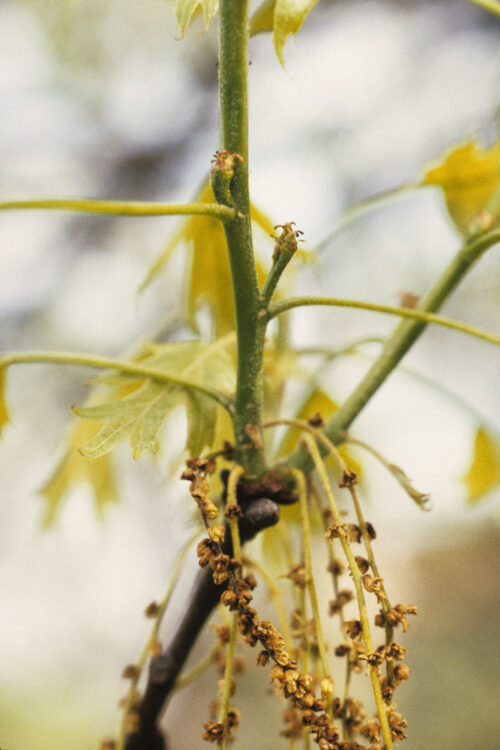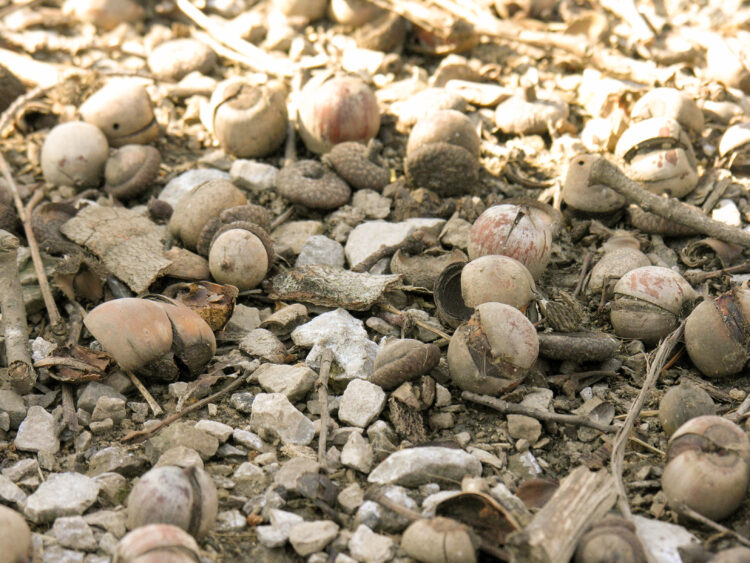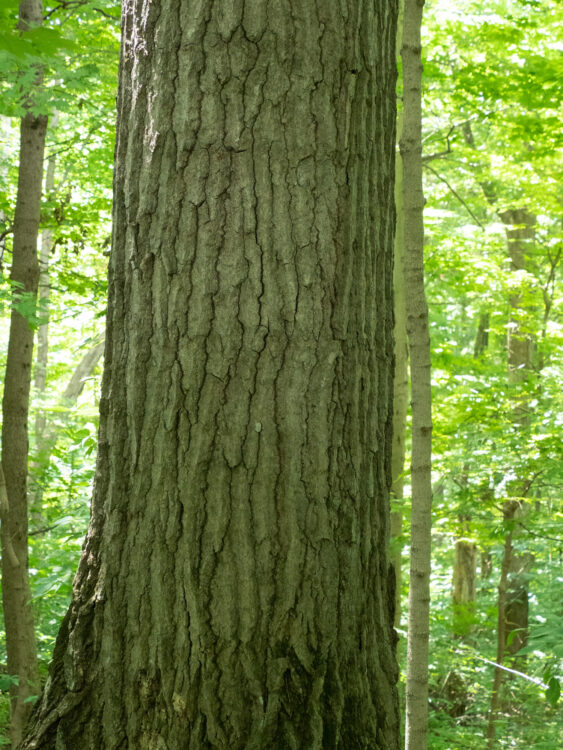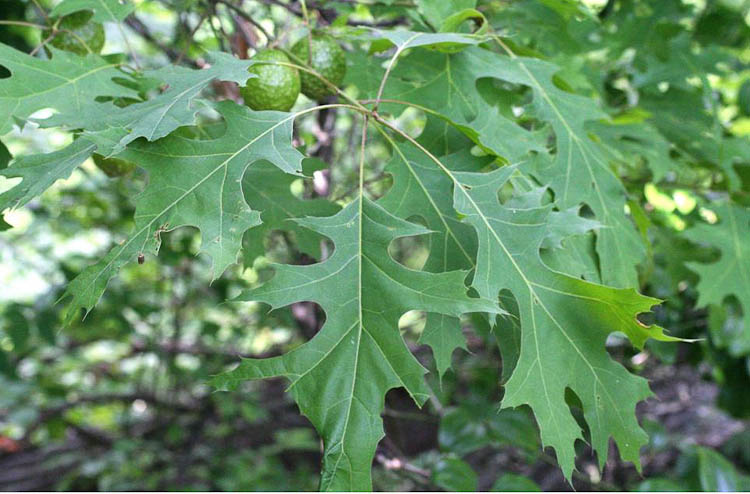northern red oak (Quercus rubra)
Fagaceae, the beech family
How to recognize northern red oak. Our oaks have simple, lobed (except for one species with entire leaves) leaves that are alternately arranged. The upper internodes are very short though, making the leaves appear clustered towards the branch tips. There are two broad categories of oaks: (1) the white oak group which has blunt lobes that do not end in bristle tips, and (2) the red oak group which has bristle-tipped lobes. To separate northern red oak from several look-alikes such as black oak, pin oak, scarlet oak, and Shumard oak, look for leaves that are thin, glabrous (hairless) beneath), and have sinuses extending about halfway to the midvein.

A typical member of the red oak group, northern red oak has bristle-tipped lobes.
Flowers and fruits. Like many forest trees, oaks are monoecious (i.e., bearing unisexual flowers, but with both sexes found on the same tree) and wind-pollinated. Lacking petals, the male flowers are in drooping catkins, and the females, while slightly larger are much fewer in number, produced in spikes of just 1-several in the axils of developing leaves in springtime.

Northern red oak flowers.
The female flowers are in few-flowered clusters in the upper leaf axils.
The males are in drooping catkins.
Oak trees produce acorns: single-seeded dry fruits with a bony covering and an odd cup-like cap. Here are some northern red oak acorns on the ground.

Acorns on the ground.
Bark. Northern red oak bark is dark gray with furrows between narrow ridges.

Northern red oak bark – pajama stripes or ski tracks
In the winter. Oaks have clustered end buds. Members of the red oak group are sharp-pointed, not blunt (similar to their leaves). The twig below is that is a close relative of northern red oak, Shumard oak (Quercus shumardii).

A twig of a member of the red oak group (Shumard oak).
Where to find northern red oak. E. Lucy Braun, in The Woody Plants of Ohio (1961, 1989; The Ohio State University Press) tell us that this species “Occurs throughout Ohio in a variety of habitats: generally absent from poorly-drained or swamp situations”.
Scanned Image from an Old Book
(Flora of West Virginia, by P.D. Strausbaugh and Earl L. Core)

Ooh, ooh! I have a question!
What are the two taxonomic groups of oaks, and how are they distinguished leaf-wise, and fruit-wise?
Members of the WHITE OAK GROUP have leaves that are bluntly lobed, have acorns that mature in one season, and are generally sweet (or at least not very bitter) and the inside of their shell is glabrous (hairless).The bur oak (Quercus macrocarpa) shown below is in the white oak group.
Conversely, members of the RED OAK GROUP have bristle-tipped lobes, acorns that take two years to mature which are quite bitter owing to the presence of tannic acid and and have a hairy inner shell lining.


